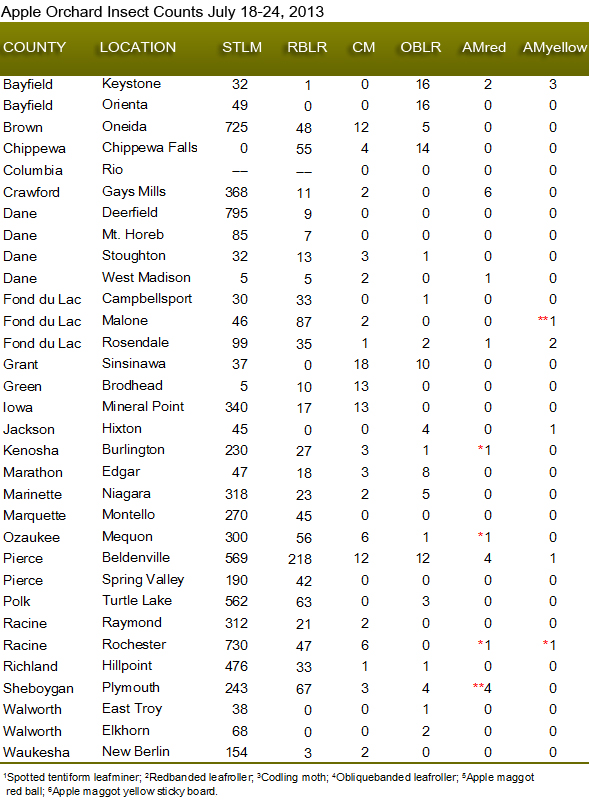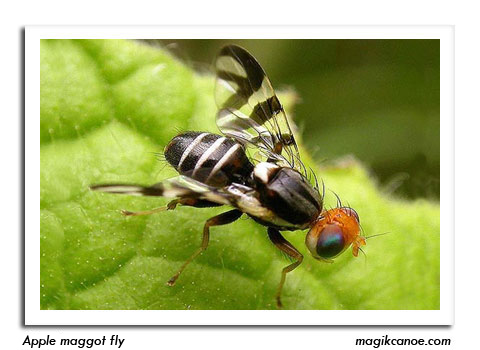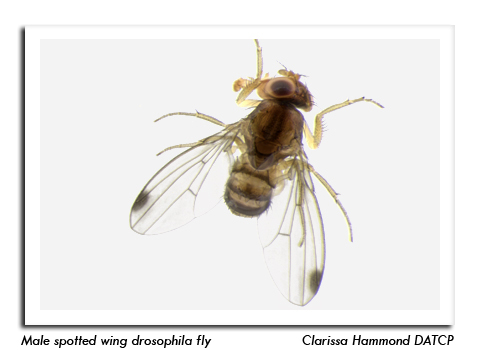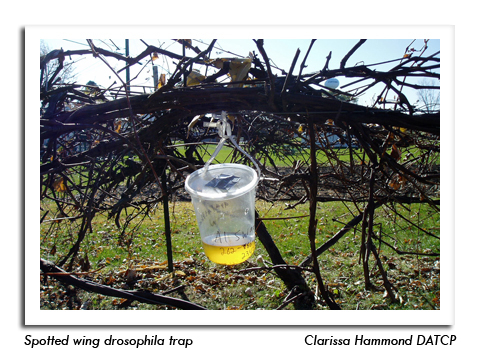
 |
|
|
Fruits
Volume 58 Number 12 Date 07/25/2013 APPLE MAGGOT - Captures on red spheres and yellow sticky traps increased slightly in the past week, with reports of flies from 11 of 32 monitoring locations. One half of the adult population is expected to appear by 1,600 heat units (base 50°F), which would place 50% emergence from July 24-August 7 in the southern half of the state and 1-2 weeks later in areas north of Green Bay. Counts have been low since emergence began three weeks ago and most sites have not reported any flies. The highest weekly count as of July 24 was six flies on a red sphere at Gays Mills in Crawford County. Continued maintenance of traps will be imperative as emergence increases in the next 2-3 weeks. SPOTTED WING DROSOPHILA - Additional flies were trapped in Iowa County on July 18, bringing the total number of counties with confirmed SWD detections this season to three. The flies were first collected in Vernon County on June 24 and a few others were trapped by UW-Madison researchers in Crawford County on July 16. As stated last week, the appearance of SWD should be viewed as an early warning to fruit growers to escalate monitoring efforts (checking traps twice weekly), install barrier netting, or make preparations for possible insecticidal control. The use of insecticides is not advised until SWD infestation is verified by trapping or visual inspection. SPOTTED TENTIFORM LEAFMINER - The peak of flight activity appears to have occurred throughout southern and central Wisconsin where counts ranged as high as 795 per trap in the past week. Egg laying is likely to be very heavy as long as the moths are numerous. Apple orchards with populations greater than one mine per leaf or a history of infestation may consider treatment of second generation leafminer larvae to reduce build-up of leafminers after the third flight begins next month. CODLING MOTH - Most apple orchards are 250 or more degree days (base 50°F) beyond the second biofix and treatment for second generation larvae has begun. An increase in moth counts from the spring to summer flight suggests that some degree of fruit injury is probable early next month and fruits should be closely inspected for damage. Apple growers are reminded to rotate insecticides between generations to prevent resistance to chemical materials. Selective larvicide applications are usually an acceptable alternative to orchard-wide treatment for sites with variable larval pressure between cultivars or blocks. -- Krista Hamilton, DATCP Entomologist 



|
|
|